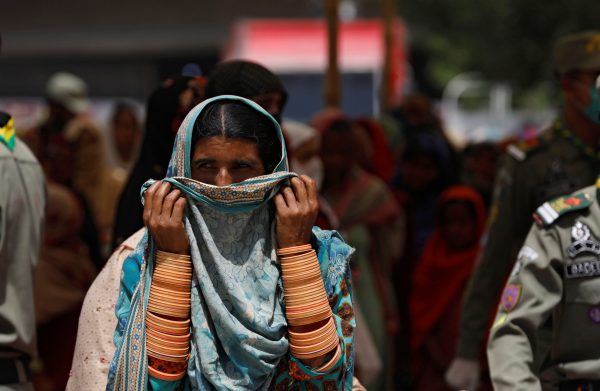Pakistan’s current birth rate is 3.6 births per woman, one of the highest in the region. It also has the lowest contraceptive prevalence rate (35 per cent) in South Asia. Much of the population using contraceptives do so out of their preference for a son. Pakistan has one of the highest desired sex ratios at birth and couples tend to produce children until they have achieved the desired number of sons. This high fertility poses serious challenges to the health of mothers and newborns — 38 per cent of children under five years of age are stunted, 18 per cent suffer from wasting and more than half of children are anaemic.
While many women want to space births out, they are often unable to do so. Around 6.4 million married women of reproductive age have an unmet demand for family planning and 44 per cent of this need reflects a desire for spacing. Meeting this demand means improving the health of millions of women and children in the country.
A major challenge faced by Pakistan’s health sector is the lack of sufficient health managers, nurses, paramedics and skilled birth attendants. These imbalances create major disadvantages for health service delivery in rural communities and urban slums. To address rural–urban disparities, the government of Pakistan introduced the Lady Health Workers (LHWs) program in 1994. With 110,000 LHWs largely financed by the government, this is one of the largest community health worker programs worldwide.
Coming from local communities, LHWs provide essential maternal and child healthcare, and impart health education, targeted mainly at rural areas and urban slums with high illiteracy and strong traditional cultural norms. LHWs help women receive and comprehend family planning information and motivate them to translate this knowledge into actual health outcomes. This program is achieving important progress in public demand for reproductive health that the top-down policy system couldn’t address in previous decades.
While the LHW program shows promising results, its entry level requirements leave about 40 per cent of the population unattended. Since the program is largely financed by the government, underfunding in certain districts — particularly in remote areas — constrains recruitment and exacerbates the relatively low coverage of workers in these districts. This low coverage has serious implications.
LHWs have a sizeable effect on fertility choices and reproductive health care for rural women in Pakistan. Rural women in communities with more LHWs are more knowledgeable about family planning. They have a lower self-reported likelihood of having more children, an increased probability of more antenatal care visits and more deliveries performed by skilled health professionals in public or private health centres. These figures stay robust even after accounting for variation in preferences for sons across different regions. The evidence also suggests that areas with more LHWs have better health outcomes for illiterate and young women — two of the most important targets of any family planning program.
LHWs are a great source of access to reproductive health care and family planning services for rural women in Pakistan. As the health of mothers and their newborns are closely linked, the LHWs greatly improve health outcomes of both. There are also significant economic benefits. Antenatal care is one example. The estimated effect of exposure to family planning induced by LHWs increases antenatal care visits by 19 per cent from the mean. If this increase occurs in the population of women between ages 15–49, almost one million women would receive at least four antenatal care visits in Pakistan.
This would save an estimated US$5 million that would otherwise need to be spent on visits to rural health centres to acquire information. The government spends approximately US$745 per LHW each year, including costs associated with salaries, supplies, training, supervision and administration. Based on these figures, every dollar invested in the LHW program returns an estimated US$6.70 through reduced costs for accessing information alone. This does not factor in other costs such as those associated with pregnancy complications and child or maternal deaths.
Being a link between rural communities and top-down service delivery, LHWs have, in recent years, become the entry point of most health interventions, particularly immunization, which as a result, compromises family planning and the reproductive health care needs of the population. Since health services have been devolved to the provinces after the 18th constitutional amendment, provincial governments should review the scope of the LHW’s work and the health needs of the population. This will help align the LHW’s work with the needs of the population and prioritise geographical areas that are the most marginalised and underserved.
Qaisar Khan is Assistant Professor at the School of Education, Lahore University of Management Sciences.

